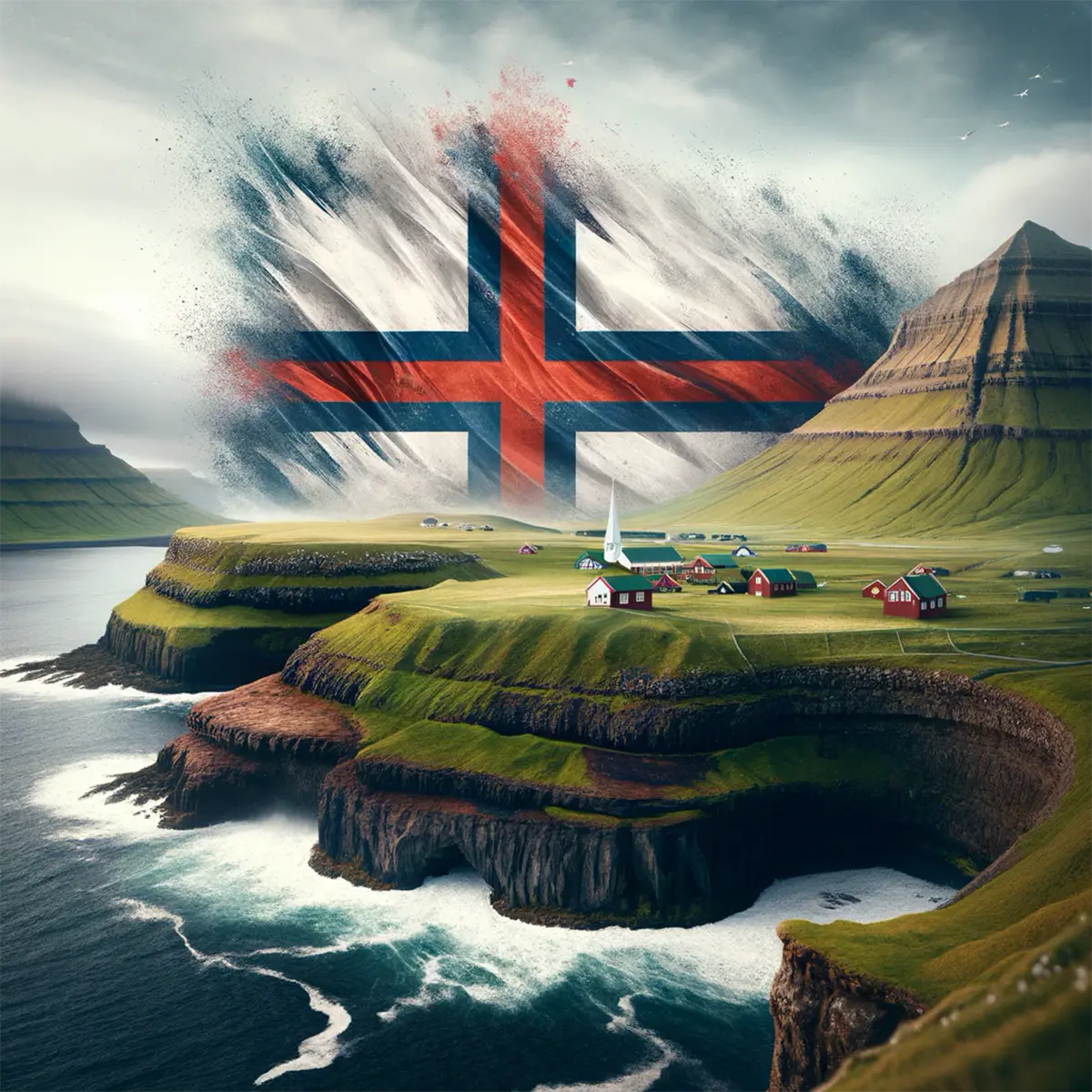The need for a flag as a symbol of national identity arose at a meeting called the "Christmas Meeting". It was held in 1888 to discuss the protection of Faroese culture and language. For many years, the flags used the shore magpie ("Tjaldursmerkið") and the ram ("Veðramerkið") as the national symbol, but this was about to change.
In 1919, three Faroese students in Copenhagen, Jens Oliver Lisberg, Janus Ossursson, and Thomas Pauli Dahl, created the flag of the Faroe Islands. They decided to design a flag in the style of other Scandinavian cross-shaped flags, taking as a basis the flags of Norway and Iceland, which they considered to be their closest neighbors. They also chose white as the base color to stand out from the rest, as the Norwegian flag has a red cloth and the Icelandic flag has a blue cloth. As for the design of the cross, Jens Oliver Lisberg argued that it should be red with a blue outline. The flag of the Faroe Islands, also known as Merkir, was first raised in the village of Famjón on June 22, 1919, and the original is in the church of Famjón. Later, Jens Oliver died of pneumonia and the Danish authorities rejected this symbol of independence, but the Faroese continued to use the student flag "Merkið". It became popular for use on ships at sea. However, the Danish authorities did not recognize it as a national flag. This led to conflicts between the Faroese and the Danes, as the former wanted the flag to be officially recognized.
In 1930, the flag began to be used in official ceremonies, and in 1931 it became commonly used, albeit unofficially. This increased tensions between the Danish authorities and the Faroese people. In 1931, a proposal was finally made to approve the Merkir as the flag of the Faroe Islands, but without a majority vote. The final recognition of the Merkir as the flag of the Faroe Islands did not take place until April 1940, when the Faroe Islands came under the control of British troops due to severed ties with Denmark and the occupation of Denmark by Germany. On April 25, 1940, Britain declared the Merkir the official flag of the Faroe Islands.
The Autonomy Act of March 23, 1948 recognized the Merkið flag as the official flag of the Faroe Islands.
However, in 1959, the Faroe Islands moved away from their northern neighbors, changing the dark blue "Norwegian" color to an independent blue.





